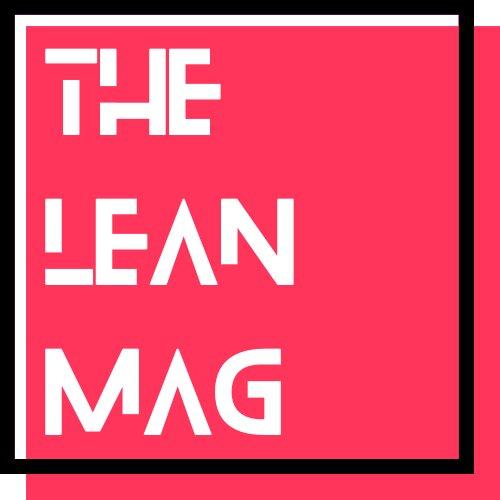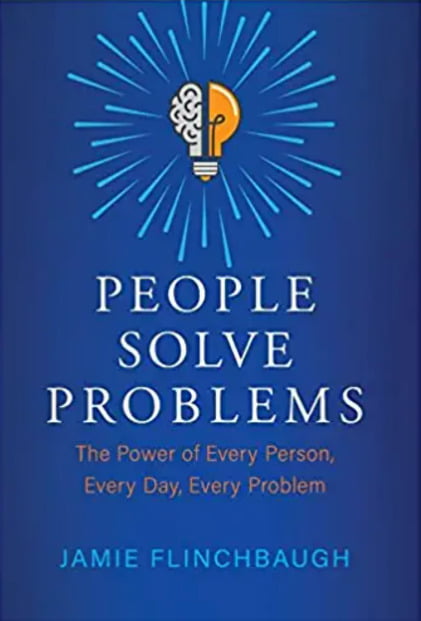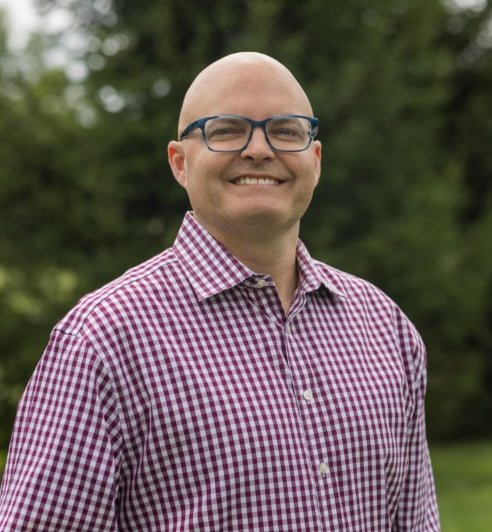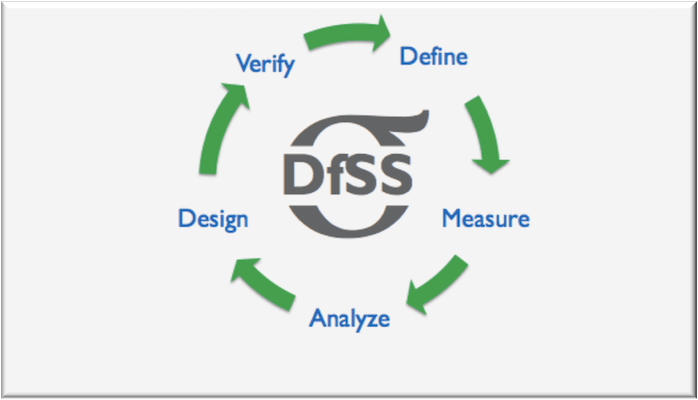Learning as the best return on invested effort
This article is provided courtesy of theleanmag, a content partner of the Operational Excellence Society.
theleanmag’s strategic goal is to grow and nurture the lean community knowledge sharing. we’re stronger together and knowing more prepares us for the daily struggle
When I ask an organization about their learning strategy, they almost always show me a training plan. Those are not the same thing. Training is about conveying what you already know to additional people. Learning is about discovery. Problem solving is built on learning. Innovation requires learning. Strategy depends upon learning. Training is a converging, standard-setting process. Learning is an inconsistent, divergent, break-some-eggs process. They are not the same thing.
Learning strategies are about achievement through discovery. There is no one right way, no tool or technology, or single leverage point that leads to success. You will need to combine the right behaviors, methods, and capabilities in order to make learning strategies effective and sustainable. Organizations should be building out the culture (that drives behavior), the systems (that provide methods), and the training and coaching (that builds capabilities) to help enable forward-moving learning. Individuals can be just as successful at leaning into these critical ingredients with or without the organization’s support.
Regardless of your role, a timeless example of learning-driven success comes from the achievements and journey of the Wright Brothers who achieved not just man’s first true flight but also helped build an entire new industry. Through examples and quotes extracted from David McCullough’s treatise The Wright Brothers, we will first look at three lessons for organizations, and then three lessons for individuals from the experiences of Orville and Wilber Wright.
Organizational Lesson 1: Leverage what is already known
How many truly new and unique ideas and solutions are truly left? Almost every idea builds upon others, even when done subconsciously. In most organizations, almost every person needing knowledge to solve their next problem does not first seek what is already known, either internally or externally. That is both expensive and a bit depressing. We use terms such as “institutional knowledge” yet rarely do we put serious efforts into ensuring that it is put to good use.
This isn’t just about having some systems to capture and distribute knowledge, as while systems can help, these solutions only work as well as the behaviors and capabilities of everyone engaged with them. This is much more about human to human interactions, which are only enabled by the processes and structure. However, it still begins with the individual who has a need or a problem to solve. When they have to dig a hole for the first time, do they just grab whatever tool is nearest and start digging or do they ask others about the right tool and approach to properly plan for the task?
The Wright Brothers knew that they needed an efficient path for learning, not just a brute force approach. McCullough shares “Before beginning their process of experimentation and exploration, Wilber Wright wrote to the Smithsonian Institute ‘I wish to avail myself of all that is already known.’ This is in addition to reading and studying birds at length.” The Wright Brothers had a goal of achievement in mind, and had no hesitation to ask for help, build on others’ knowledge, and stand on the shoulders of those who came before them. They knew that there were no extra points tacked on to their achievement if they leveraged the knowledge of others.
Organizational Lesson 2: Value the grind of the process, not just the achievement
The process of creation, innovation, and developing solutions to problems of all sizes is filled with mundane effort, persistence, and grind. The eureka moment is often celebrated, and that day’s story is told, but less often we tell of the long journey of failed experiments, preparation, study, and more. If we don’t value the process and all the underpinnings of discovery but instead only value the outcome, the culture will be insufficient to sustain people through those trials and tribulations.
The Wilbers understood this, and not just the two brothers but the family and most of the people they surrounded themselves with. As McCullough writes “Their nephew Milton, who as a boy was often hanging about the brothers, would one day write, ‘History was being made in their bicycle shop and in their home, but the making was so obscured by the commonplace that I did not recognize it until many years later.” It is difficult to overstate the importance of their nephew’s observation, because the celebration of the Wright Brothers primarily focuses on that one historic flight in Kitty Hawk but this is a massive distortion of history. Nearly an entire year of labor would go into preparing for the annual trek to Kitty Hawk, and this was simply the final manifestation of long-hours, study, and effort, which included everything from lots of sewing to building their own accommodations when they got to Kitty Hawk.
We think of Steve Jobs on stage presenting the first iPhone as an image of innovation, but it’s really the lab coat, welder’s mask, blistered fingers, caffeine-fueled late nights, waiting, preparing, and all the less glorious tasks that all make up the ingredients of breakthrough success. Organizations can create space, encouragement, funding, resources, and more to ensure that those raw ingredients are available to those who choose to avail themselves of the labor of pursuit of discovery and innovation.
Organizational Lesson 3: Create a self-reinforcing ecosystems of creation
Learning and creation often happen within an environment that helps encourage and enable it. You want to create a whirlwind of people creating, solving problems, trying ideas. This is not about removing the shackles of risk, constraint, or cost, but encouraging more and more creating and testing of ideas. Too many organizations try to pare down and focus the process of learning and creation too quickly, in an effort to reduce risk by only putting energies where they know there will be a valid payoff. It is very difficult to know, in advance, exactly which efforts will produce a positive outcome, which ones will be an outright failure, and which ones will produce learning that can be used again in the next effort.
Because of this, organizations are better off creating momentum of the pursuit of progress while monitoring, although not attempting to control, the ratios between success, failure, and learning-outcome success. The first ratio is to look at how many failed experiments are not generating any learning, because if they are at least accomplishing that, then they are not truly failures. If that ratio is healthy, then pay attention to the net outcomes of success. I don’t believe the ratio is terribly useful here, as it will ebb and flow in unpredictable patterns, but instead are those collective efforts producing a suitable set of outcomes?
The Wright Brothers were beneficiaries of being caught up in that whirlwind of discovery, both at a national and local level. As described in the book: “The times were alive with invention, technical innovations, new ideas of every kind. George Eastman had introduced the “Kodak” box camera; Isaac Merritt Singer, the first electric sewing machine; the Otis Company had installed the world’s first elevator in a New York office building; the first safety razor, the first mousetrap, the first motor cars built in America – all in the dozen years since Orville started his print shop and Wilber emerged from his spell of self-imposed isolation.”
In the Wright Brothers’ backyard, Dayton, Ohio, this was even more true: “Then, too, there was the ever-present atmosphere of a city in which inventing and making things were central to the way of life. At about this time, just prior to the turn of the century, according to the U.S. Patent Office, Dayton ranked first in the country relative to population in the creation of new patents. The large factories and mills of Dayton kept growing larger, producing railroad cars, cash registers, sewing machines, and gun barrels.”
The point is that while the Wright Brothers’ specific act of invention may have been an act of will power (and genius), the pursuit of that invention was not. Pursuit of invention was normalized, and happening all around them. They could move forward without fear of ridicule or personal expense. Even their business, the famous bicycle shop, likely benefited from their pursuit of flying not because of functional leverage but because customers loved the idea of buying from the two brothers pursuing the accomplishment of invention.
While you may not be able to do much about the community environment you find yourself in, and even less about the time period in which you live, you and your organization can create an ecosystem that encourages and celebrates the pursuit, regardless of the accomplishment.
Learning is about discovery. Problem solving is built on learning. Innovation requires learning. Strategy depends upon learning.
Personal applications of the lessons
Not everyone is in a position to transform at their organization. In fact, not everyone is even in an organization, as the many freelancers and solo-entrepreneurs find, to worry about or be able to follow the three strategies outlined above. What can be learned from the example of the Wright Brothers at an individual level. After all, they weren’t operating out of some division of a large corporate enterprise. Engaging in a deliberate learning strategy, which can range from tapping into those who have already explored a topic, to focused problem solving, to experimentation, greatly accelerates and improves your pathway to success. Organizational boundaries, and budgets, are not the limiting factors that many make them out to be. The following three lessons can help an individual achieve success through learning.
Personal Lesson 1: Value learning above all else
Valuing learning above all else means that learning is its own reward. This means that we should care more about our learning opportunities than traditional measures such as status and pay. After all, what is the value of a higher paycheck if your future prospects are limited because of a lack of learning.
If a pay cut or less glamorous role leads to greater opportunities to learn, then it is worth that cost, or loss. If a problem isn’t the “fun” project but leads to greater learning, then it is a great trade-off. When I first arrived at Chrysler, every young engineer wanted an assignment on the Viper program, as few cars in the world were more exciting than this. However, because of this dynamic, most participants had very little responsibility. I selected to work on the just-about-to-launch completely-new minivan. There was so much to do, and this program was so important, that I had 20 times the responsibility of most of my peers, and that accelerated my learning, and ultimately my career.
An example from the Wright Brothers: “Years later, a friend told Orville that he and his brother would always stand as an example of how far Americans with no special advantages could advance in the world. ‘But it isn’t true,’ Orville responded emphatically, ‘to say we had no special advantages…the greatest thing in our favor was growing up in a family where there was always much encouragement to intellectual curiosity.”
This quote says a lot not just about the value of intellectual curiosity, but that it’s not just a natural trait but a cultivated capability. There are no guarantees that the pursuit of learning generates the same kind of accomplishment as Orville and Wilbur, but where capital or position or other advantages are less, that intellectual curiosity can be just as powerful a personal advantage for success.
Personal Lesson 2: Professional success almost never comes overnight
Professional success, and almost any other kind of success from creative talent to physical fitness, almost never comes overnight. When it does, there is almost always a good bit of luck involved. Learning is a long-term play, with a long-term view of success. The first person to get promoted quickly loses their advantage if they fail to maintain a high rate of learning. This is similar to the young athlete that grows faster than their peers, leveraging their height or strength early on and therefore diminishing their development of other traits, only to watch other kids catch up and surpass them.
The Wright Brothers demonstrated this long-term view of success. “In their visits to Kitty Hawk, beginning with a glider before adding an engine, were always about recognition that this was a long-term learning journey. He was there to learn, not to take chances for thrills. ‘The man who wishes to keep at the problem long enough to really learn anything positively must not take dangerous risks. Carelessness and overconfidence are usually more dangerous than deliberate accepted risks.”
Taking the long-term view to learning involves managing those risks, and your safety, in smart ways while maximizing your learning. That safety could mean physical safety, as it meant certainly for the risks the Wright Brothers were taking. That safety could also mean emotional safety, being free from ridicule and taking risks that those around you will continue to support. Even something as simple (albeit not easy) as a family support system to continue to encourage you forward can be meaningful. Finally, professional safety could mean anything to having a base job, or degree, to cover your downside while you take entrepreneurial risks on the weekend, or could mean knowing exactly how far you can push within your job without immediate risk to employment or prospects. If you’re no longer at the company, then you may not be there to achieve the vision you set forth to achieve. Take the long-term view of success, even if that requires elusive patience.
Personal Lesson 3: Have theories and test them
Critical to personal learning, or learning how to advance your project or cause, is that you must have theories, hypotheses, and ideas, and then proceed to test them. The ability to learn is not just about taking in preexisting knowledge. That’s more about memorization. The ability to learn is about understanding cause and effect, and ultimately to be able to either predict outcomes reliably or to understand why things are happening as they are. This is about putting ideas forward, even if just on paper, and then testing those theories against reality. That is the path to true learning.
The Wright Brothers personified this pursuit. “With characteristic understatement, Wilber summarized by saying they were able to return home [from Kitty Hawk] “without having our pet theories completely knocked in the head by the hard logic of experience, and our own brains dashed out in the bargain.”
In addition to the recognition of the long-term view outlined in Personal Lesson 2, he demonstrated that their knowledge was on theory until they could really see how it stacked up against reality. More is made of the story where the tables and math and models that they started with, provided by others, had not gone through such rigor of reality-based testing and therefore were only assumed to be correct. Even though they had not yet truly flown, they knew what they knew, and that was cause enough of celebration. This testing, and therefore validation and invalidation of so-called knowledge, was the foundation on which all further accomplishment would be built.
While many of you may not have the aspirations of accomplishing something as world-changing as the Wright Brothers, we all want to be better at what we do and valued for what we accomplish. Learning is the cornerstone of that accomplishment, the Wright Brothers provide a litany of lessons for us, whether as organizational or as individuals.
About the Author
Jamie Flinchbaugh is an accomplished Entrepreneur, Senior Executive, Consultant, and Board Member with 30 years of learning-oriented experience spanning a range of roles across exceptionally diverse industries and functions. Has held several leadership positions and over the last 20+ years, Jamie has helped build nearly 20 companies as a co-founder, board member, advisor, or angel investor.








